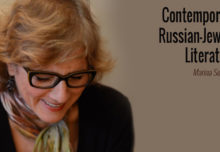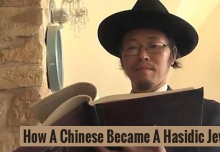This quiet period in Jewish history was spoiled by wars between the Christians and the Muslims, and the Moors lost more battles and more land until all that remained for them was one city, Granada. When Spain became a Catholic country and King Ferdinand of Castile married Queen Isabella of Aragon, together they decided to banish all non-Catholics so passed new laws making it quite impossible for them to live there. Neither Moors nor Jews could deal in spices, be doctors or moneylenders and had to live in separate districts which would be locked and guarded at night. After a final battle the Moors fled back across the Straits of Gibraltar to North Africa and the Jews were offered a choice – become Catholic or die.
Some Jews pretended to convert but remained Jewish in secret, lighting candles on Friday nights with drawn blinds, but the ones caught were first tortured and then burned in front of the Spanish people. This was called an Auto Da Fe or act of faith and untold thousands of Sephardic Jews died during this terrible time. In 1492 Ferdinand and Isabella issued an Edict of Expulsion ordering all Jews to leave, in fact the very last ships left Spain on August 5th of that year. Legend has it that this date was also the ninth day of Av, Tisha B’Av, a day remembered forever in Jewish history for the destruction of both the first and second temples, and which now included the Expulsion from Spain.
It is a little known fact that Columbus’s ships had to leave from an obscure Spanish port called Palos because the shipping lanes from the bigger ports of Cadiz and Seville were clogged with everything which could float, all carrying fleeing Sephardic Jews. The Mediterranean was covered as far as the eye could see with small ships for which the Jews paid enormous fares. Areas of the Ottoman Empire, modern Albania, Bulgaria, Greece and Turkey, became Jewish havens while others headed for Ottoman North African possessions.
The Sultan of Turkey, Beyazit II, sent his Turkish Navy to find and bring these Sephardim to his country at the eastern end of the Mediterranean. Beyazit, who was very wise, realized that these Jews would bring to his poor people all the wonderful skills which Spain had enjoyed. So he promised them freedom of religion and the Sephardim settled, built beautiful synagogues and used those skills.
And so the Sephardic Jews, including my own family, who had lived in Spain for so many centuries and arrived still clutching the keys to their Spanish home, settled to a relatively good life in Turkey for the next 500 years and to this day many of us still speak 15th century Spanish, the Judeo-Spanish language called Ladino, which over the years incorporated many Turkish, Hebrew and Greek words. Those Jews who settled in the countries around North Africa adapted their language to a Judeo-Arabic one called Haketia.
For most of its lifetime, Ladino was written in the Hebrew alphabet, in Rashi script, or in Solitro, a cursive method of writing letters, it was only in the 20th century that Ladino was ever written using the Latin alphabet. The language continued to be spoken amongst all those fortunate people who managed to escape the Inquisition and ended up in any part of the Ottoman Empire. Ladino was the ‘lingua franca’ amongst all Sephardim where a Greek born Jew could speak to an Albanian Jew with ease, or a Turk with a Bulgarian. Ladino was spoken in the home and widely in the Sephardic community, much of the Shabbat services in our synagogue was in that language.
Our nearest Ladino speaking community is just over the border in Seattle, with others in Los Angeles, San Francisco, New York and South Florida, and I am a member of a Ladino Internet group based in Texas which has members around the world. In Europe the Spanish government is actively encouraging Jews who can prove their Spanish ancestry to apply for citizenship, the same goes for Portugal, and are also sponsoring programs based in Madrid for learning the Ladino language. The Nazis destroyed most of the communities in Europe where Ladino had been the first language among Jews. Israel is now the country with the greatest number of Ladino speakers, with about 200,000 people who still speak or understand the language, and many citizens have kept their Ladino alive in print through newspapers, food and music.

Ralph Levy




